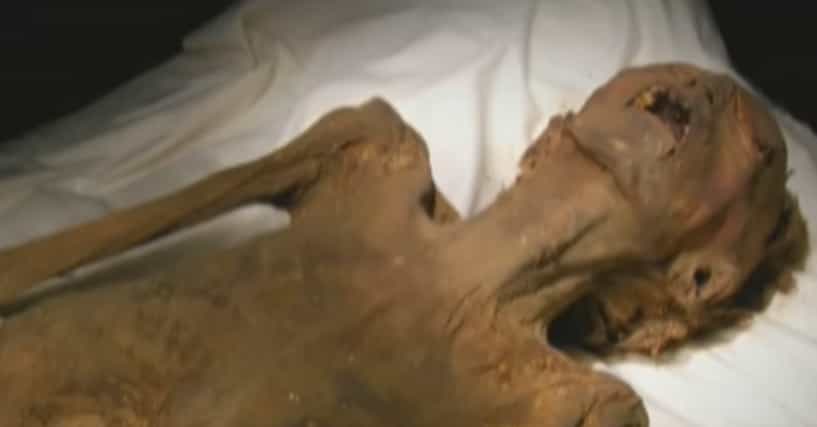Everyone enjoys a good mummy, but one of the most intriguing tales involving these encased legends has nothing to do with King Tut or Juanita. The “Unknown Man E” mummy, discovered at the ancient Egyptian site of Deir el-Bahri, is one of history’s most well-known mummies. The “Screaming Mummy” is a more popular name for this mummy, one of the spookiest ever discovered.
This strange mummy has a thrown-back head and an open jaw that appears to be screaming bloodieously. But why is Egypt’s Screaming Mummy screaming, and what happened to him? After examining the mummy and his wrappings, archaeologists hypothesized that he might have been a humiliating royal by the name of Pentawere. In this antiquity plot, a minor queen attempted to depose Ramesses III in order to install her son Pentawere on the throne. Pentawere was eventually compelled to commit suicide after the plan was uncovered, but what became of him? Perhaps when they unearthed the Screaming Mummy, archaeologists found his body!
He wasn’t properly mummified, and his hands and feet are bound.
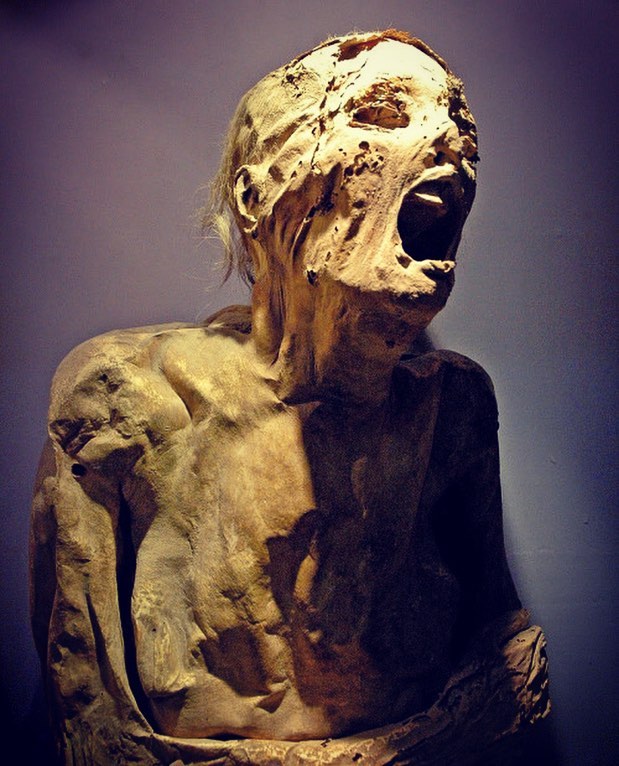
Scientists were alarmed by The Screaming Mummy’s striking differences from other mummies they had previously discovered in Egypt. He was wrapped in sheepskin instead of linen, which the purity-obsessed Egyptians considered be filthy, which was one noticeable distinction. Only criminals or those who were cursed to hell for all time would have been entombed in such a way.
His wrists and feet were chained, giving the impression that he had died a prisoner, and his coffin was unmarked, making it difficult for anybody to repeat his name in the hereafter. He was simply dried out in natron with resin put in his mouth; he wasn’t even properly mummified (it’s a drawn-out, time-consuming process).
He Might Have Been A Prince Who Was Executed for His Participation In “The Harem Conspiracy”
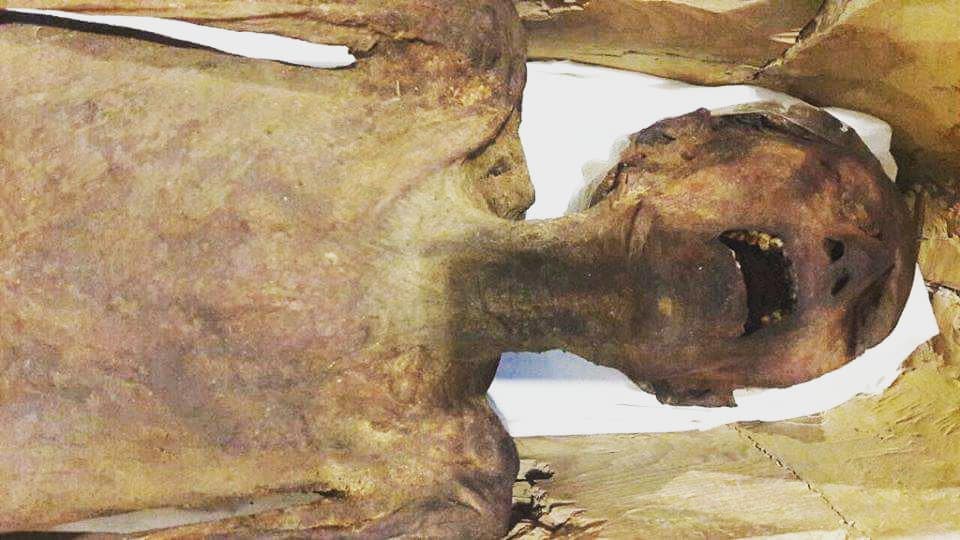
Researchers believe they may have located Unknown Man E. An individual by the name of Prince Pentawere, a descendant of Pharaoh Ramesses III once took part in a plot to depose his father. Tiy, one of Ramesses’ minor wives and a woman in his harem, desired that her husband abdicate the throne. She sought to depose the monarch and install Pentawere as his successor. Ramesses’s designated heir was also to be removed as part of the scheme.
Pentawere’s scheme failed, and he was denounced as a traitor along with Man E, who resembled the prince in appearance. It’s interesting to note that Ramesses III and the Screaming Mummy share Y chromosomes and DNA markers. Man E and Ramesses III were probably father and son.
Only the head falling back post-mortem caused the “scream.”
At first sight, one could assume that the screaming grimace the Screaming Mummy was sporting was a result of him feeling excruciating pain. Actually, it most likely occurred quite naturally. It turned out that as he passed, his head dropped back. After death, his jaw collapsed, leaving him to continue “screaming” indefinitely.
The mummy was discovered with other royal coffins.
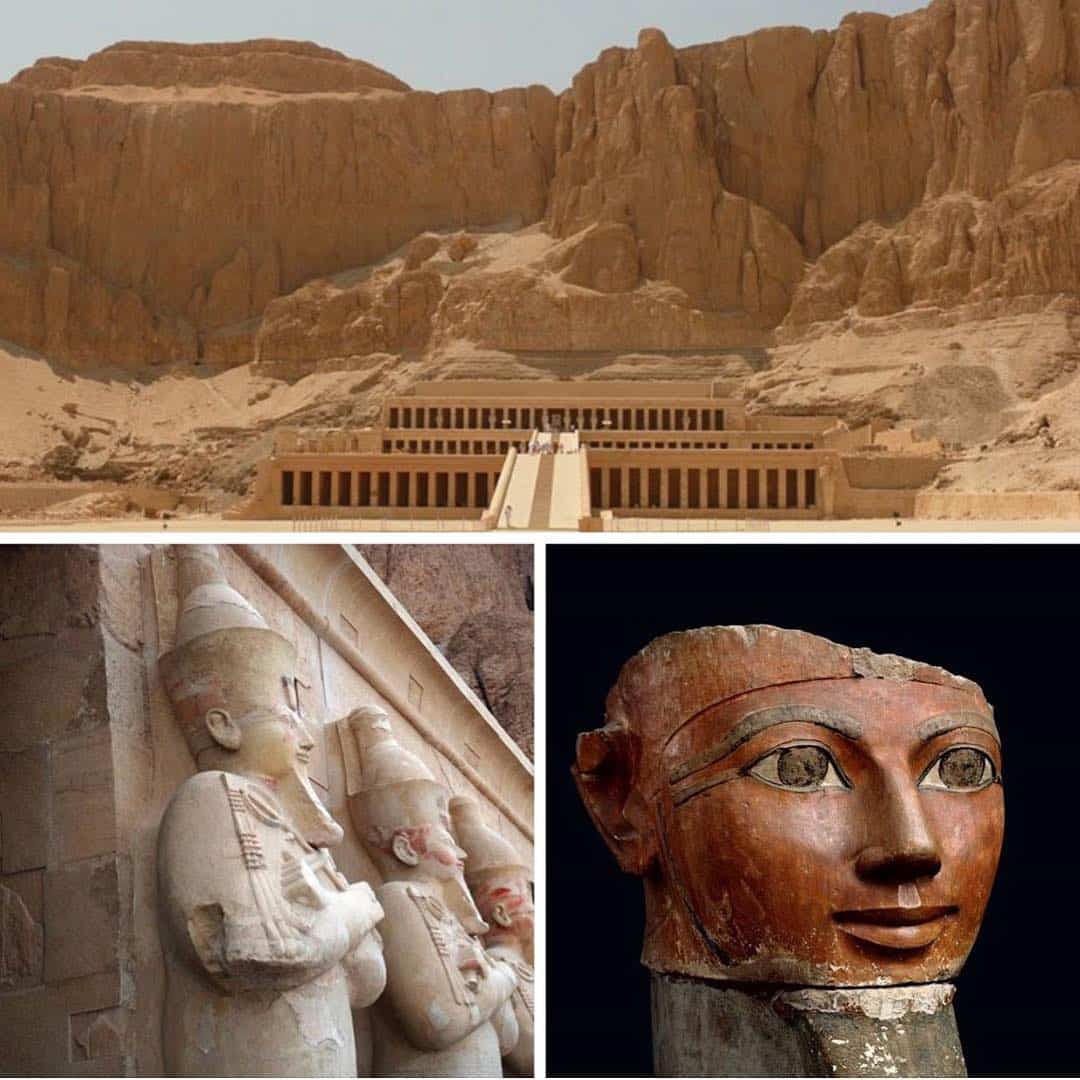
The Screaming Mummy and several other royal tombs were found together. The tribe lived close to the Valley of the Kings at Deir el-Bahri. Unknown Man E was not identified, unlike many of the other mummies, but the fact that he was found with royal mummies shows he was of royal descent.
All Over the World, Screaming Mummies Have Been Discovered.
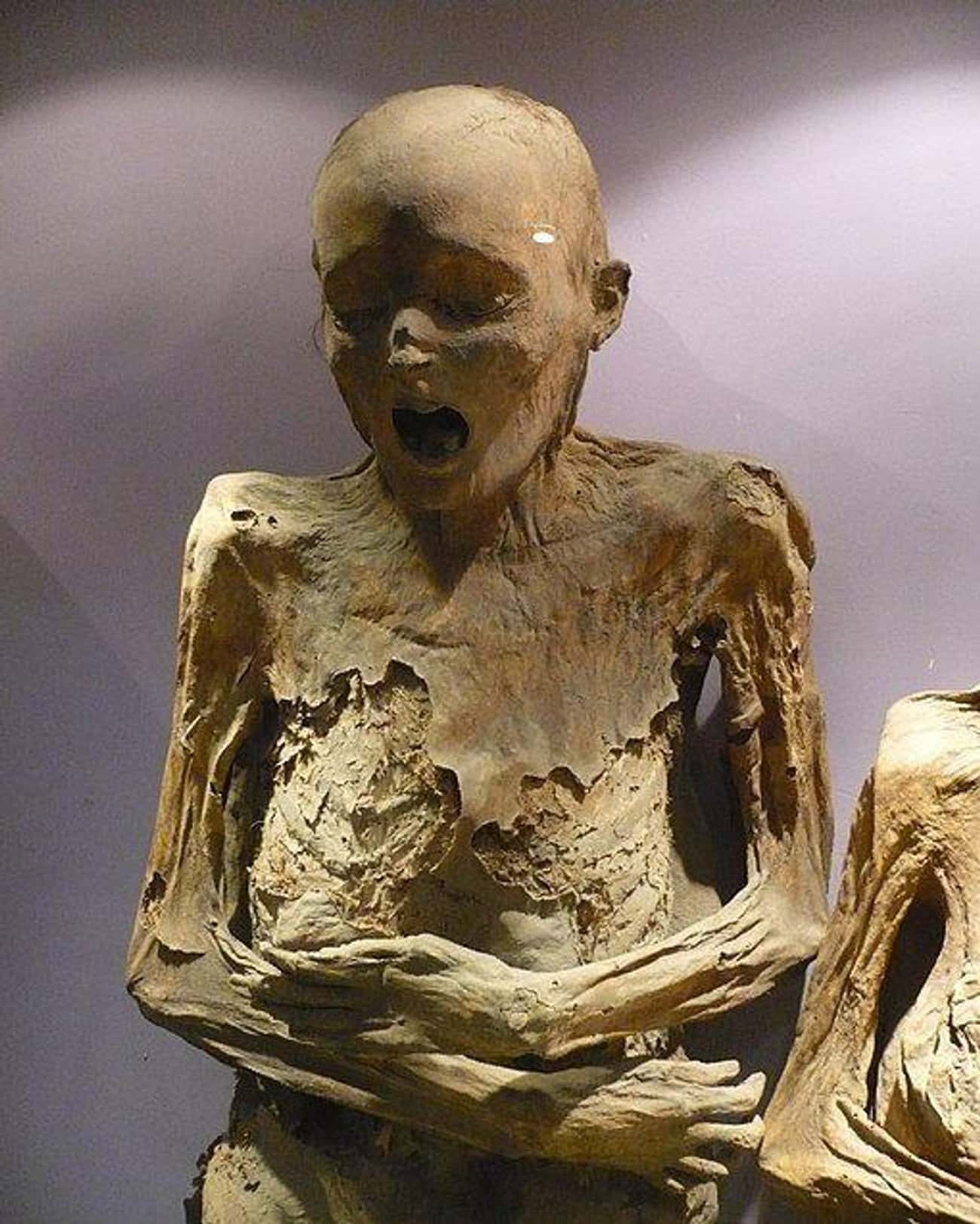
The mummy was wailing, but it wasn’t because of how he died; it was because of where the body parts were. Screaming mummies are very widespread around the world, from Sicily to Peru. One museum in Mexico even has over 111 items. The facial expressions of other Egyptian mummies are similar.
Their jaws gape open when rigor mortis sets in, leaving behind a horrifying visage as the joints holding the jaw in place loosen.
Some academics believe he was a prince of the Hittites.
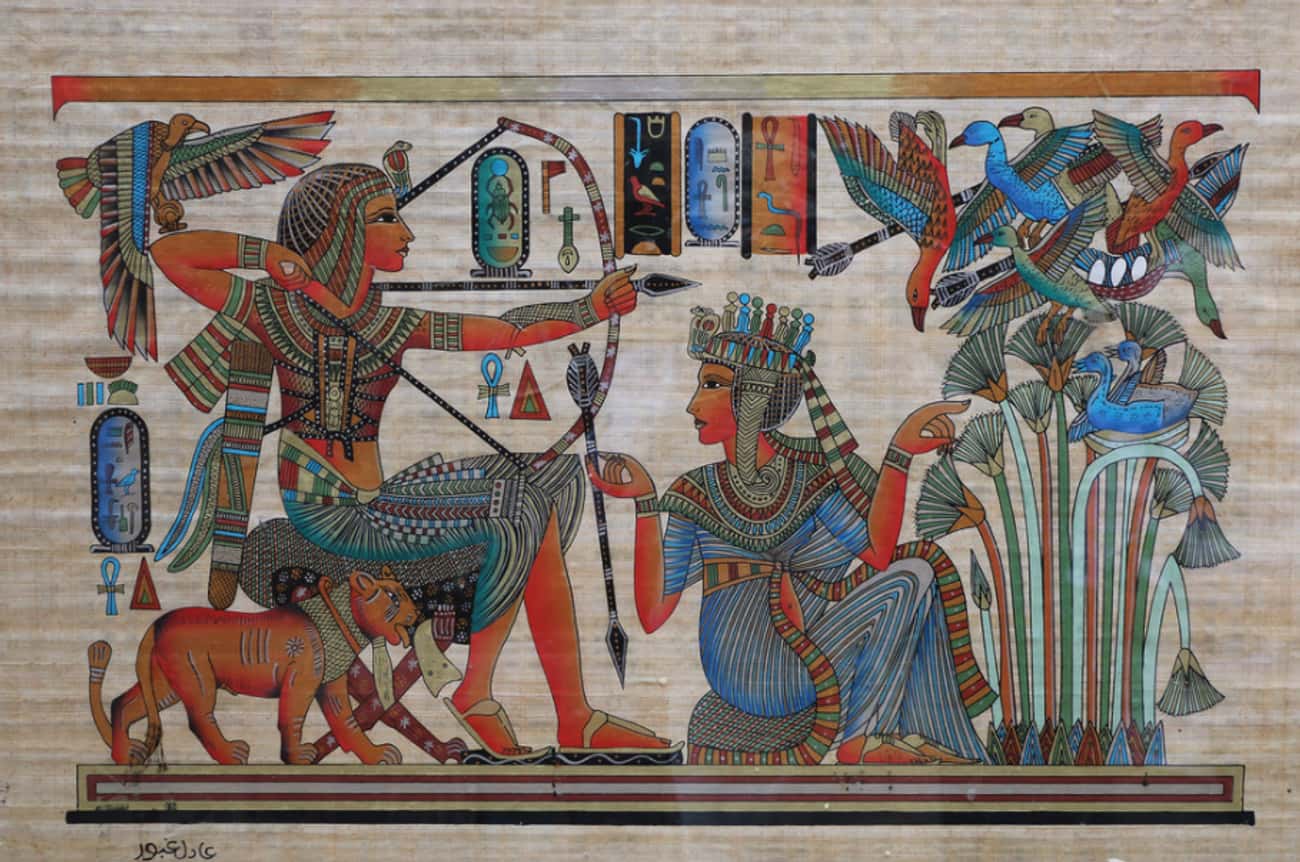
There is no way to positively match Unknown Man E with Pentawere. Who could he have been if he wasn’t an Egyptian royal, though?
There is a hypothesis that the mummy may have once been a Hittite prince on his way to Egypt to wed King Tut’s widow. Scholars don’t know the prince’s current location, and his death was strange. This notion has been refuted by academics, who point out that a man who mysteriously vanished wouldn’t be mummified.
Another idea holds that he was a prominent Egyptian who died abroad and was only partially mummified because people around him lacked access to the right methods.
He was discovered in 1886 by a well-known archaeologist, although he only recently gained popularity.
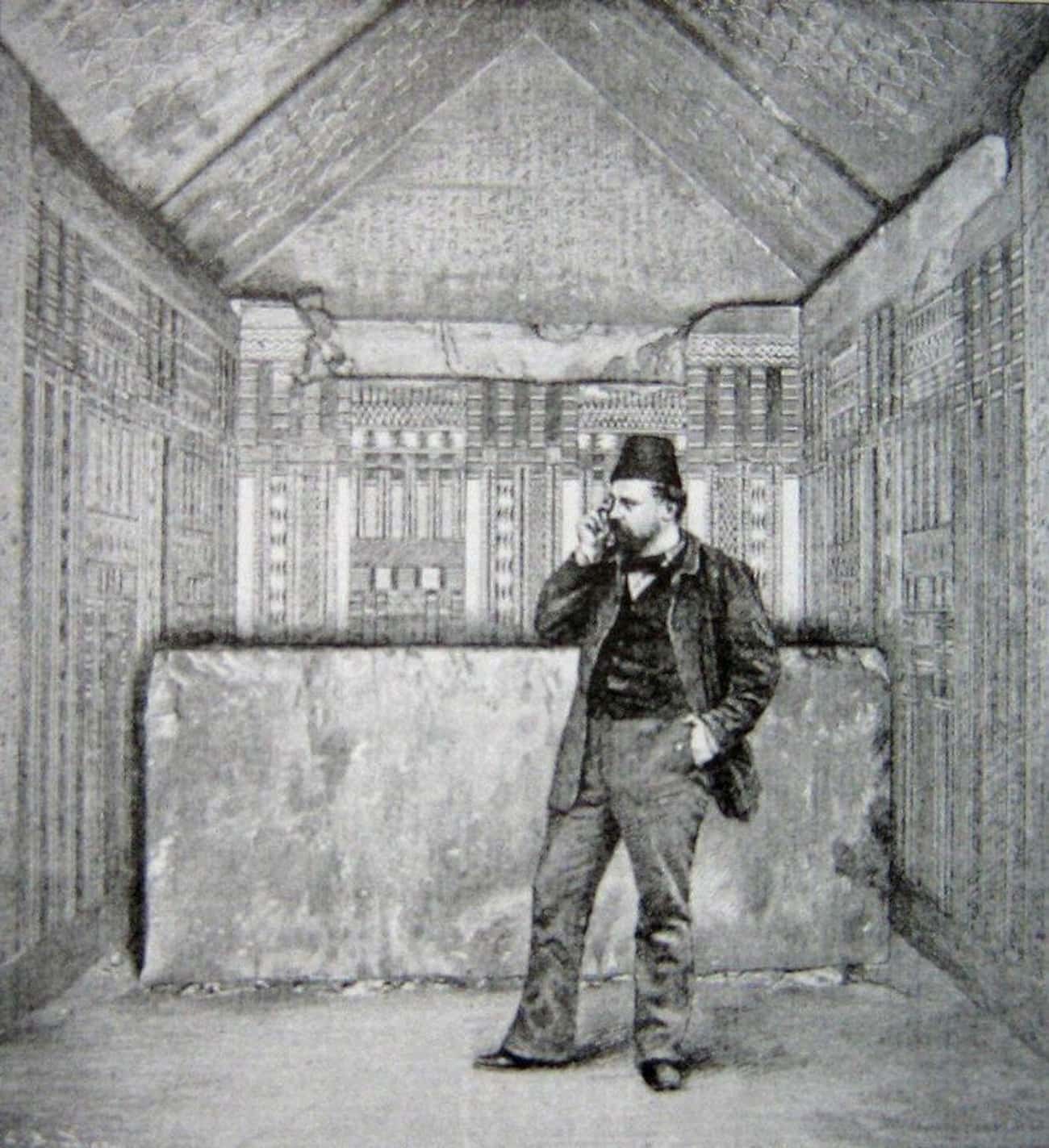
The Screaming Mummy was found in a royal tomb in 1886 by renowned Egyptologist Gaston Maspero, but it wasn’t until recently that “Unknown Man E” started to draw tourists. Audiences are intrigued by his expression and the likely terrible circumstances of his death. For years, researchers have been perplexed by how he died, but a recent exhibition in a museum has brought the man to the attention of the country.
He was one of the few mummy protestors left unattended during the 2011 Egyptian uprising.

Many of Egypt’s cultural traditions came under siege after the 2011 Egyptian revolution shook the country in northeastern Africa. Losses were particularly severe in the Cairo Egyptian Museum. Two mummies were destroyed, and numerous priceless items vanished, according to Dr. Zahi Hawass. Looters avoided the Screaming Mummy, nevertheless.
More than 20,000 people visited the Egyptian Museum thanks to the screaming mummy.
The Screaming Mummy quickly gained popularity after it made its premiere at the Egyptian Museum in Cairo. The mummy, which had previously been left in the cellar, attracted nearly 20,000 visitors, according to the museum director. There were both Egyptian and foreign visitors among the attendees, and there was global media coverage of the event.
Check out ‘actors from the mummy‘ movie then and now.


